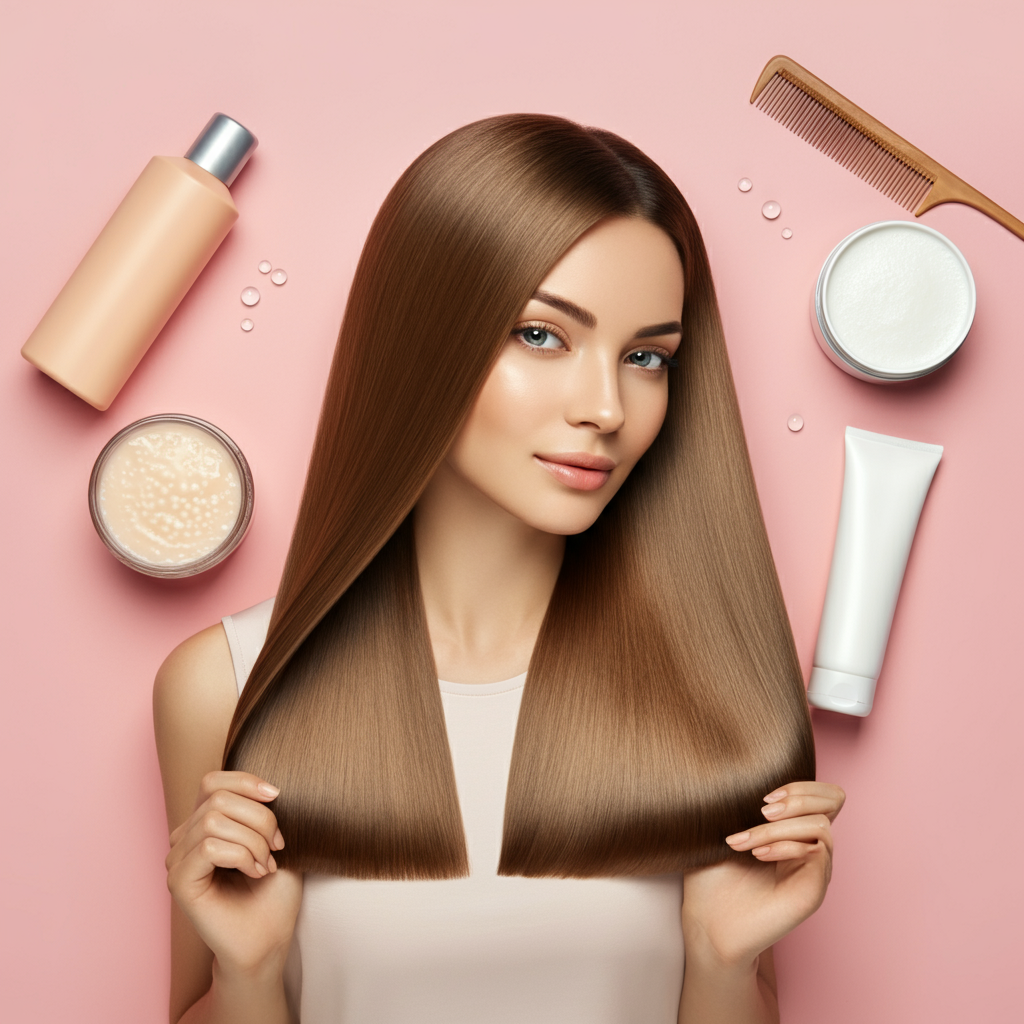
Introduction
Having naturally straight hair can feel like a blessing and a curse. On one hand, it’s often seen as low-maintenance and effortlessly sleek. On the other, it comes with its own unique set of challenges, from an oily scalp to a frustrating lack of volume. If you’ve ever felt like your hair falls flat no matter what you do, or if it looks greasy just a day after washing, you’re not alone. The truth is, straight hair requires a specialized approach to look its best.
Understanding your hair’s specific needs is the first step toward building an effective straight hair care routine. Many common straight hair problems, such as oiliness, frizz, and flatness, stem from the very structure of the hair follicle. Unlike curly hair, where the shaft has bends and turns, straight hair grows directly out of the scalp, allowing natural oils (sebum) to travel down the hair shaft with ease. This can lead to an oily scalp and weighed-down strands.
This guide will walk you through everything you need to know about caring for your straight locks. We’ll explore the different types of straight hair, tackle the most common issues, and provide a detailed daily, weekly, and monthly routine. By the end, you’ll have the knowledge and straight hair care tips to build a regimen that keeps your hair healthy, voluminous, and beautiful.
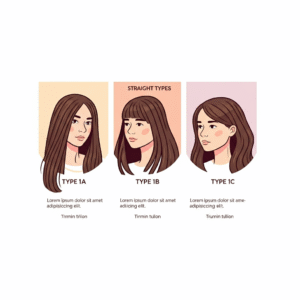
Characteristics of Straight Hair: What’s Your Type?
The first step in any effective hair care plan is understanding what you’re working with. According to the Andre Walker Hair Typing System, straight hair is classified as Type 1. This category is further broken down into three sub-types: 1A, 1B, and 1C. Each has distinct characteristics that influence how it behaves and which products work best. Knowing your specific type can revolutionize your straight hair maintenance.
Type 1A: Fine and Flat
Type 1A hair is the straightest of the straight. It’s often described as “pin-straight” or “stick-straight.” This hair type is very fine, soft, and has a noticeable shine due to its smooth cuticle. However, its fine texture means it struggles to hold a curl and often lacks volume. A common issue for Type 1A hair is oiliness. The fine strands can quickly become weighed down by sebum, making an effective oily scalp care strategy essential. This hair type is less common and is often found in people of Asian descent.
Type 1B: The Middle Ground
Type 1B is the most common straight hair type. It’s still very straight but has more body and volume than Type 1A. You might notice a slight bend at the ends, but it doesn’t form a distinct wave. This type is medium in texture, making it slightly easier to style and hold a curl than its finer counterpart. While it can still be prone to an oily scalp, the added body helps prevent it from looking flat as quickly.
Type 1C: Thick and Coarse
Type 1C hair is the thickest and coarsest of the straight hair types. It’s still predominantly straight but might have a few subtle waves or kinks, especially in humid weather. This thickness makes it prone to frizz and can sometimes be resistant to styling. While it’s less likely to look oily at the roots compared to Type 1A, the coarse texture can feel dry at the ends, making frizz control a priority.
Straight Hair Type Comparison Chart
|
Feature |
Type 1A Hair |
Type 1B Hair |
Type 1C Hair |
|---|---|---|---|
|
Texture |
Very fine, soft, silky |
Medium texture, more body |
Thick and slightly coarse |
|
Appearance |
Pin-straight, flat, shiny |
Mostly straight with some body |
Straight with a slight wave/bend |
|
Volume |
Lacks natural volume |
Slight natural volume |
Can have good volume |
|
Common Issues |
Very oily scalp, flat hair |
Oily roots, can look flat |
Frizz, dryness, can be unruly |
|
Styling |
Difficult to hold a curl |
Holds a style better than 1A |
Can be resistant to styling |
Common Straight Hair Problems
While often coveted, straight hair is not without its difficulties. The unique structure that gives it that sleek appearance is also the root cause of several common straight hair problems. Recognizing these challenges is key to finding the right solutions.
Greasy Scalp and Oily Strands
This is arguably the most frequent complaint among those with straight hair. The hair shaft is a direct path from the scalp to the ends. This structure allows the scalp’s natural oils, or sebum, to travel down the hair easily. While sebum is vital for moisturizing hair, an excess can make roots look greasy and weigh the hair down. This is particularly true for fine, Type 1A hair. Oily scalp problems often require a careful balance of cleansing without stripping the hair of its necessary moisture.
Lack of Volume and Flat Appearance
The same smoothness that makes straight hair shine also contributes to its tendency to lie flat. The strands fall directly against the head without the bends or coils that create natural lift in wavy or curly hair. This can result in a flat appearance, especially at the crown. Finding the right volumizing products and styling techniques is a crucial part of any daily hair care routine for straight hair.
Frizz During Humid Weather
Many people associate frizz with curly hair, but straight hair is not immune. Frizz occurs when the outer layer of the hair, the cuticle, lifts, allowing moisture from the air to enter and swell the strand. For straight hair, especially the thicker Type 1C, this can create a halo of flyaways and an unpolished look. Humidity is a major trigger, making frizz control essential during certain seasons.
Prone to Split Ends and Breakage
Because straight hair can be very fine and is often subjected to heat styling to create volume or texture, it can be susceptible to damage. Split ends occur when the hair shaft frays due to dryness and damage. Brushing too aggressively, over-washing, and excessive heat styling without protection can all lead to hair breakage and split ends. Straight hair shows every imperfection, making split ends particularly noticeable.
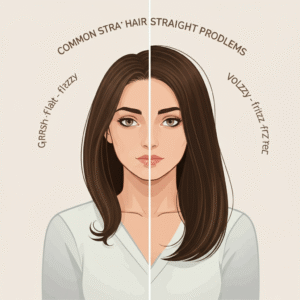
Daily Hair Care Routine for Straight Hair
A consistent daily routine is the foundation of healthy hair. For straight hair, the focus should be on managing oil, boosting volume, and protecting against damage without weighing the hair down. Here are the actionable steps for your daily straight hair care routine.
1. Cleansing: The Right Way to Wash
How often you should wash your hair is a personal decision based on your specific hair type and lifestyle. Those with very oily Type 1A hair may feel the need to wash daily, while those with thicker, less oily hair might find every other day is sufficient.
- Choose the Right Shampoo: Look for a lightweight or volumizing shampoo. Sulfate-free shampoos are an excellent choice as they cleanse gently without stripping natural oils, which can prevent your scalp from overproducing sebum in response. If you have an oily scalp, a shampoo for oily scalp with ingredients like tea tree oil or salicylic acid can help regulate oil production.
- Washing Technique: Concentrate the shampoo on your scalp, where most of the oil and buildup accumulates. Gently massage it in with your fingertips (not your nails) to stimulate blood flow. The suds that rinse down will be enough to clean the ends of your hair.
2. Conditioning: Lightweight Hydration
Conditioner is non-negotiable, even for oily hair. It replenishes moisture, smooths the cuticle, and helps with detangling. The key is to use it correctly.
- Select a Lightweight Conditioner: Avoid heavy, creamy conditioners designed for very dry or curly hair. Instead, opt for a volumizing conditioner or one labeled “lightweight.” Silicone-free products are also a great option, as silicones can build up and weigh hair down.
- Application is Key: Apply conditioner only from the mid-lengths to the ends of your hair. This is the oldest part of your hair and needs the most moisture. Applying it to the roots will only add to the problem of a flat, greasy appearance.
3. Detangling: Gentle Does It
Wet hair is at its most fragile. Pulling or tugging can cause stretching and hair breakage.
- Use a Wide-Tooth Comb: After rinsing out your conditioner, gently squeeze excess water from your hair with your hands. While the hair is still damp, use a wide-tooth comb to work through any tangles. Start from the ends and gradually work your way up to the roots. This method prevents you from pulling a knot tighter and causing breakage.
- Brush vs. Comb: A wide-tooth comb is best for wet hair. Once your hair is dry, a boar bristle brush can be great for distributing natural oils from the scalp down the hair shaft, which adds shine and can help prevent the roots from looking too oily.
4. Protecting from Heat: A Must-Do Step
If you use a blow dryer, flat iron, or curling wand, heat protection is not optional. Heat styling can damage the hair cuticle, leading to dryness, frizz, and split ends.
- Apply a Heat Protectant: Before any heat comes near your hair, spritz a quality heat protectant spray evenly throughout. These products create a barrier between your hair and the heat, minimizing damage. Look for lightweight formulas that won’t make your hair feel sticky or heavy.
5. Styling: Less is More
When it comes to styling products for straight hair, the golden rule is “less is more.” Product buildup is a major culprit behind flat, lifeless hair.
- Volumizing Mousse or Root Lifter: To combat flatness, apply a small amount of volumizing mousse to your damp roots before blow-drying.
- Dry Shampoo: Dry shampoo is a straight-haired person’s best friend. It absorbs excess oil, adds texture, and provides a volume boost. You can use it on clean hair for added lift or on second-day hair to refresh your style.
- Finishing Products: A lightweight frizz serum or shine spray can be used sparingly on the ends to tame flyaways and add polish. Avoid heavy creams, waxes, or oils that will instantly weigh your hair down.
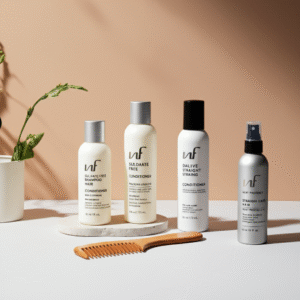
Weekly & Monthly Treatments for Long-Term Health
While your daily routine addresses immediate concerns, incorporating weekly and monthly treatments is vital for long-term straight hair maintenance and damage prevention.
Weekly Scalp Exfoliation
Just like the skin on your face, your scalp can benefit from regular exfoliation. A scalp scrub helps to remove dead skin cells, product buildup, and excess oil that can clog hair follicles and inhibit healthy hair growth.
- How to Use: Once a week, before shampooing, apply a scalp scrub to your damp scalp. Gently massage in circular motions for a few minutes, then rinse thoroughly and follow with your usual shampoo and conditioner. This is a key part of oily scalp management.
Clarifying Shampoo for Buildup Removal
Even with the best daily routine, product buildup is inevitable. Hairsprays, serums, and even minerals from hard water can accumulate on the hair shaft, leaving it dull and lifeless.
- How Often: Use a clarifying shampoo once or twice a month to give your hair a deep clean. If you use a lot of styling products or have very hard water, you might do this every two weeks. If not, once a month is usually sufficient. Be aware that clarifying shampoos can be drying, so always follow up with a nourishing conditioner or a deep conditioning treatment.
Bi-Weekly Deep Conditioning
While you want to avoid heavy conditioners daily, a bi-weekly deep conditioning treatment can provide an essential moisture boost, especially for the ends of your hair which are prone to dryness and split ends.
- Choose the Right Mask: Look for a mask that offers hydration without being overly heavy. Focus the application on the mid-lengths and ends, avoiding the scalp. Leave it on for the recommended time (usually 10-20 minutes) before rinsing thoroughly.
Occasional Protein Treatment
Hair is primarily made of a protein called keratin. Heat styling, chemical processing, and environmental stressors can break down this protein, leaving the hair weak and prone to breakage. A protein treatment can help to rebuild the hair’s structure.
- When to Use: Protein treatments should be used sparingly, perhaps once a month or every six weeks. Overuse can lead to “protein overload,” making the hair brittle and stiff. If your hair feels mushy or overly elastic when wet, it’s a good sign you could benefit from a protein treatment for strength.
Recommended Products for Straight Hair
Navigating the hair care aisle can be overwhelming. To simplify things, here are the categories of products that work best for achieving a healthy and beautiful straight hair care routine.
- Shampoo: Look for sulfate-free, lightweight, or volumizing shampoo. These formulas cleanse effectively without stripping the hair or weighing it down. A good clarifying shampoo is also a must-have for monthly use.
- Conditioner: A volumizing conditioner or a lightweight, silicone-free formula is ideal. These provide necessary moisture and detangling properties without sacrificing body.
- Leave-In Products: A lightweight leave-in conditioner for fine hair can be beneficial for detangling and adding a layer of moisture before styling. A high-quality heat protectant spray is essential for anyone who uses heat tools.
- Styling Products:
- Dry Shampoo: An absolute staple for absorbing oil and adding volume.
- Volumizing Mousse/Root Lifter: For building body at the roots.
- Lightweight Frizz Serum: To tame flyaways and add shine. Apply a tiny amount only to the ends.
- Texturizing Spray: A sea salt or texturizing spray can add grip and a “piecey” look, preventing the hair from looking too perfect or flat.
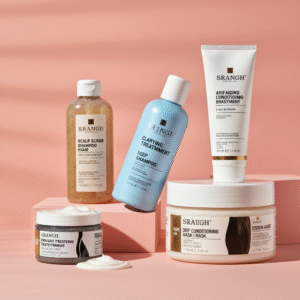
Lifestyle Tips for Healthy Straight Hair
What you do beyond your shower routine has a significant impact on your hair’s health. Holistic care is crucial.
- Balanced Diet for Hair Growth: Your hair is a reflection of your overall health. A diet rich in protein (the building block of hair), iron, zinc, and vitamins like Biotin (B7), Vitamin C, and Vitamin E is essential. Include hair growth foods like eggs, spinach, fatty fish, avocados, and nuts in your meals.
- Stress and Sleep: High stress levels and poor sleep can contribute to hair problems, including hair loss. Practice stress management techniques and aim for 7-9 hours of quality sleep per night for better hair and scalp health.
- Gentle Handling: Be mindful of how you treat your hair. Avoid aggressive towel drying; instead, gently squeeze water out with a microfiber towel. Use silk or satin pillowcases to reduce friction and prevent breakage while you sleep.
- Regular Trims: Getting your hair trimmed every 6-8 weeks is the only real way to get rid of split ends and prevent them from traveling further up the hair shaft. Regular trims keep your hair looking healthy and polished.
Mistakes to Avoid with Straight Hair
Sometimes, what you don’t do is as important as what you do. Here are common mistakes to avoid in your straight hair care routine.
- Over-washing: While it’s tempting to wash greasy hair daily, over-washing can strip your scalp of natural oils. This can cause your scalp to panic and produce even more oil to compensate, creating a vicious cycle. Try to stretch the time between washes using dry shampoo.
- Skipping Heat Protectant: This is one of the biggest sins in hair care. Applying direct heat without a protective barrier is a guaranteed way to cause heat damage, leading to dry, brittle hair and split ends.
- Using Heavy Products: Heavy creams, thick oils, and waxy pomades are not for straight hair. They will instantly weigh your hair down, making it look flat and greasy. Always opt for lightweight formulas.
- Applying Conditioner to Your Roots: Conditioner is meant for the older, drier parts of your hair (the ends). Applying it to your scalp will only add to oiliness and kill any chance of volume.
- Ignoring Your Scalp: Healthy hair starts with a healthy scalp. Neglecting scalp care by letting product buildup accumulate can clog follicles and impact hair growth.
Seasonal Hair Care Tips
Your hair’s needs can change with the weather. Adapting your routine seasonally will keep it looking its best year-round.
Summer Hair Care
- Manage Oil and Sweat: Increased heat and humidity in the summer can mean more sweat and oil. You may need to wash your hair more frequently or rely more heavily on dry shampoo and scalp scrubs.
- UV Protection: The sun’s UV rays can damage and fade your hair. Wear a hat during prolonged sun exposure or use a UV protectant spray for hair.
- Combat Humidity and Frizz: This is when your frizz control products will be most valuable. A lightweight anti-frizz serum can help seal the cuticle and block out humidity.
Winter Hair Care
- Fight Dryness: Cold outdoor air and dry indoor heating can zap moisture from your hair. This is a good time to be consistent with your bi-weekly deep conditioning treatments.
- Control Static: Dry air also leads to static. A leave-in conditioner or a quick spritz of hairspray on your brush before running it through your hair can help combat static electricity.
- Avoid Over-washing: Since you’re likely sweating less, you may be able to go longer between washes, which helps prevent further drying of your scalp and hair.
Conclusion
Caring for straight hair is a science of balance—balancing cleansing with moisture, fighting oil without causing dryness, and creating volume without weighing it down. By understanding your specific hair type and its unique challenges, you can move beyond generic advice and build a straight hair care routine that truly works for you.
From choosing the right lightweight conditioner to mastering the art of the weekly scalp scrub, every step plays a part in achieving the healthy, voluminous, and shiny hair you want. Embrace your naturally straight hair by giving it the specialized care it deserves.
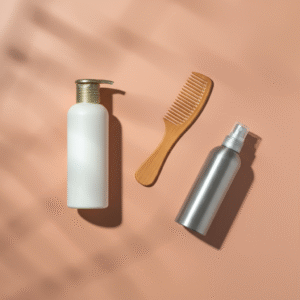
FAQs about Straight Hair Care
Here are answers to some of the most frequently asked questions about maintaining straight hair.
How often should I wash straight hair?
This depends on your specific hair type. Type 1A hair might need daily washing due to oiliness, while Type 1B or 1C can often go every other day or even every three days, especially with the help of dry shampoo. Listen to your hair.
What’s the best way to add volume to straight hair naturally?
Start with a volumizing shampoo and conditioner. Applying a root-lifting mousse to damp roots and blow-drying your hair upside down can create significant lift. Using dry shampoo on clean, dry roots also adds texture and volume.
Can straight hair be permanently damaged by heat tools?
Yes. Excessive and unprotected use of heat styling tools can cause irreversible damage to the hair’s protein structure, leading to breakage, split ends, and a dull appearance. Always use a heat protectant and use the lowest effective temperature setting on your tools.
What are some good natural remedies for straight hair?
An apple cider vinegar rinse (one part ACV to three parts water) after shampooing can help clarify the hair and add shine. A weekly scalp massage with a few drops of rosemary oil diluted in a carrier oil like jojoba can stimulate the scalp and promote healthy growth.


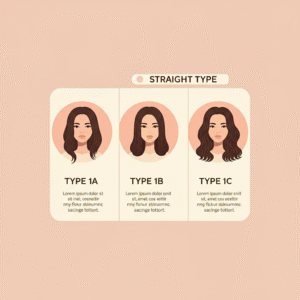



Leave a Reply